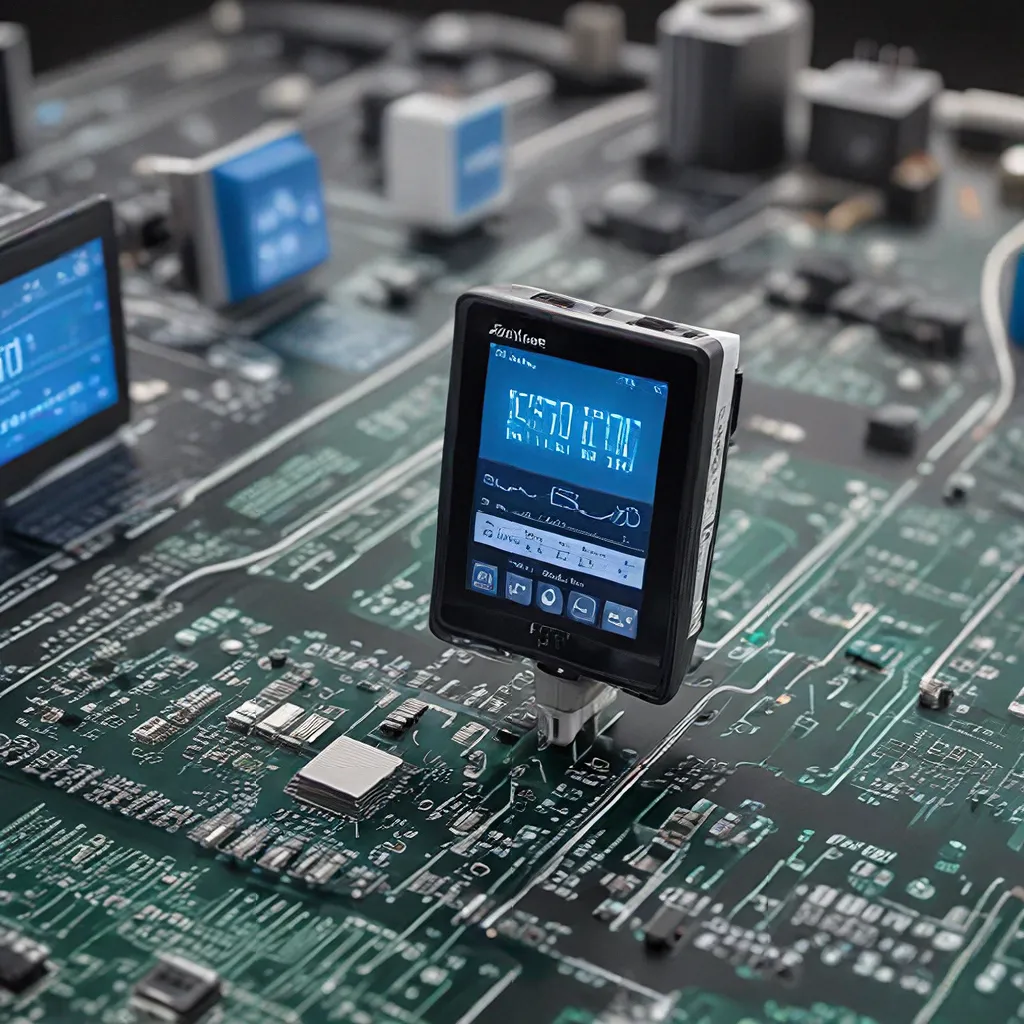
In the rapidly evolving world of the Internet of Things (IoT), sensor networks play a crucial role in gathering data, monitoring processes, and enabling intelligent decision-making. However, as these sensor-driven systems are deployed in increasingly complex, dynamic, and harsh environments, the need for robust and adaptable sensor calibration has become paramount.
The Challenges of IoT Sensor Networks
IoT sensor networks are often tasked with operating in demanding conditions, such as industrial settings, outdoor locations, or remote areas. These environments can be subject to fluctuating temperatures, strong electromagnetic interference, physical shocks, or even extreme weather conditions. In such scenarios, the accuracy, reliability, and durability of the sensor hardware and software become critical factors for the success of IoT applications.
Traditional sensor calibration techniques, which typically rely on static, lab-controlled settings, often struggle to maintain performance in these dynamic and harsh environments. The cumulative drift of sensors, measurement noise, and the impact of external magnetic field interference can all contribute to degraded data quality and unreliable system behavior.
Adaptive Sensor Calibration: A Holistic Approach
To address these challenges, adaptive sensor calibration has emerged as a crucial strategy for ensuring robust and reliable IoT sensor networks. This holistic approach combines advanced hardware design, dynamic filtering algorithms, and intelligent data processing to create a comprehensive solution for maintaining sensor performance in complex environments.
Integrated Sensor Modules
At the hardware level, integrated sensor modules that combine high-precision gyroscopes, accelerometers, and geomagnetic field sensors with dedicated magnetic recovery functions have become increasingly popular. These modules leverage high-performance microprocessors and Kalman dynamic filtering algorithms to quickly analyze the real-time situation and adapt to changes in the environment.
The source information highlights several key features of these advanced sensor modules:
-
Dynamic Filtering and Noise Reduction: Through the use of advanced digital filtering technology, these modules can effectively reduce measurement noise and improve the overall accuracy of the sensor data.
-
Attitude Calculation and Stabilization: The integrated attitude solver, combined with dynamic Kalman filtering, enables accurate output of the module’s current attitude, even in dynamic environments. This results in extremely high stability and performance, surpassing that of some professional inclinometers.
-
Heading Angle Stabilization: By incorporating the Z-axis heading angle into the geomagnetic sensor filter fusion, these modules can solve the cumulative error caused by gyroscope drift in the 6-axis algorithm, providing stable heading angle data for long-term use.
-
Magnetic Field Interference Mitigation: The inclusion of military-grade magnetic field chips allows these sensor modules to automatically recover from magnetic field interference, ensuring reliable performance in challenging environments.
Advanced Firmware and Algorithms
Alongside the hardware advancements, the firmware and software powering these sensor modules play a crucial role in adaptive sensor calibration. The use of high-performance microprocessors and advanced dynamic calculation and Kalman filtering algorithms enables these modules to quickly analyze the current real-time situation and adapt their performance accordingly.
Key firmware features include:
-
Dynamic Calibration: The modules can dynamically calibrate their sensors to maintain high accuracy and stability, even in the face of temperature changes, vibrations, or other environmental factors.
-
Flexible Connectivity: The modules support serial port connectivity, allowing users to choose the best connection method for their specific application. The serial port rate is also adjustable, from 4800 bps to 230,400 bps, providing flexibility in data transmission.
-
High-Speed Data Output: With a maximum data output rate of 200 Hz, these sensor modules can deliver high-resolution, low-latency data to meet the demands of advanced IoT applications.
-
Rugged Design: The IP67-rated aluminum shell provides strong resistance to external electromagnetic interference and enables these modules to withstand long-term operation in harsh industrial environments.
IoT Applications and Impact
The advancements in adaptive sensor calibration have far-reaching implications for a wide range of IoT applications, from industrial automation and smart city infrastructure to wearable devices and environmental monitoring.
Sensor networks equipped with these robust and adaptable sensor modules can maintain high-quality data collection and reliable system performance in the face of dynamic and challenging conditions. This, in turn, enables improved decision-making, optimized processes, and enhanced safety across various industries.
For example, in industrial automation, these adaptive sensor modules can ensure accurate and stable measurement of equipment parameters, such as vibration, tilt, or magnetic field, even in the presence of harsh environmental factors. This can lead to enhanced predictive maintenance, reduced downtime, and improved operational efficiency.
In the realm of smart city infrastructure, adaptive sensor networks can monitor critical elements like traffic flow, air quality, or structural integrity with a high degree of reliability, providing city planners and officials with the data they need to make informed decisions and improve the quality of life for residents.
Furthermore, wearable devices and environmental monitoring systems leveraging these adaptive sensor modules can deliver precise, long-term performance in a variety of settings, from fitness tracking to wildlife conservation efforts.
The Future of Adaptive Sensor Calibration
As the IoT landscape continues to evolve, the importance of adaptive sensor calibration will only grow. Emerging technologies, such as 5G, edge computing, and artificial intelligence, will further enhance the capabilities of sensor networks and drive the demand for robust, reliable, and adaptable sensor solutions.
Key areas of future development in adaptive sensor calibration include:
-
Sensor Fusion and Data Fusion: Integrating multiple sensor modalities and advanced data fusion algorithms to provide even more comprehensive and accurate monitoring of complex environments.
-
Predictive Maintenance and Automated Calibration: Leveraging machine learning and predictive analytics to anticipate sensor degradation and automatically adjust calibration parameters, minimizing downtime and maintenance requirements.
-
Energy-Efficient Designs: Exploring low-power sensor architectures and energy-harvesting techniques to extend the operational lifetime of IoT sensor nodes in remote or inaccessible locations.
-
Cybersecurity and Data Integrity: Developing robust security measures and tamper-proof data transmission to ensure the confidentiality, availability, and integrity of sensor data in IoT systems.
As the sensor networks and IoT landscape continues to evolve, the advancements in adaptive sensor calibration will play a crucial role in enabling reliable, resilient, and high-performing IoT systems that can thrive in the most dynamic and challenging environments.